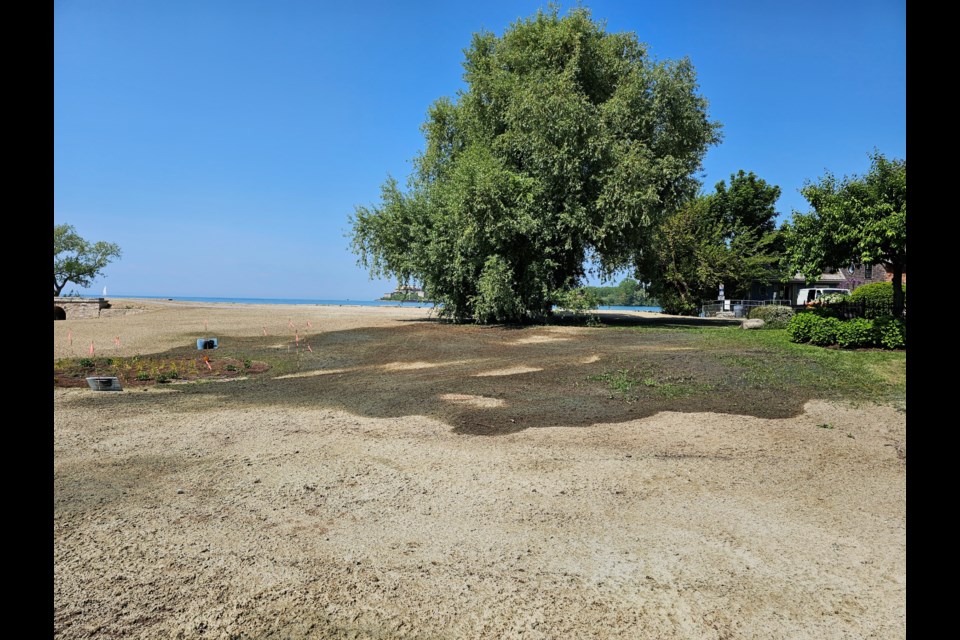Ron Simkus, a retired mining engineer who has taken it upon himself to monitor water levels in the Dock Area and consult with the town on soil erosion and other issues, is delighted to see a rain garden finally installed in the area he calls The Parkette.
He has two wishes, though, for the area that surrounds the rain garden — that the town adopt his name for it, and that they water what has now become a brown eyesore surrounding the garden. So far, no response to either.
At the moment The Parkette isn’t looking quite as it should — instead of green grass, it’s turning brown.
While neighbours agreed to water the rain garden which they helped plant, and have, the area around it is the responsibility of the town. The company that hydroseeded it said it should be misted, but by early this week, it hadn’t been, and looked like it was needed, says Simkus — on his agenda was yet another call to the town to see if that could be accomplished.
By Thursday, a photo he took says it all. it didn't happen.
He also anticipates the town putting up a sign identifying the area as Balls Beach Park.
Town documents variously call it Balls Beach Park, Ball’s Beach Park, and Balls Beach Parkette (on Facebook), and that concerns him. He refers to it simply as The Parkette, and hopes the town will officially adopt that name.
Online maps are already referring to it as a park, when in reality is about 80 metres long, with no washrooms, change rooms or picnic tables planned. “It’s intended to be a passive park,” he says, and he fears tourists will arrive, expecting a Malibu-style beach and all the facilities usually found in a park on a beach.
Simkus calls the rain garden and the final planting of grass around it “part of a dream that has its roots dating back 40 years.”
And at that time, in a 1982 report, it was called a parkette, he says.
“Today The Parkette has a living, functioning purpose. It’s more than aesthetics, it’s now a practical mitigation for high lake levels but also as a symbol of what ‘resilience’ needs to look like for Niagara-
on-the-Lake as climate change evolves,” he says, calling it an example of “good engineering combined with green solutions and novel landscape architecture.”
Even 20 years ago, a 2004 staff report by Clive Buist, then director of parks and recreation, described the passive parkette that exists today, possibly with benches, but no lighting, no picnic tables or washrooms.
“And that report called it The Parkette,” Simkus says, “the purpose being that without a name, the true vision of a ‘passive’ park would be achieved. If you call it Balls Beach you create a destination attraction and the passive objective is lost.”
It wasn’t that long ago the town posted a sign directing people to a kayak and canoe launch at the beach, and when Simkus pointed out there wasn’t actually a boat launch or any of the expectations that would accompany one, and that visitors would arrive at the park looking for it, Rome D’Angelo, then newly-
hired as director of operations, had it removed.
He's hoping the same common sense will apply to The Parkette.
